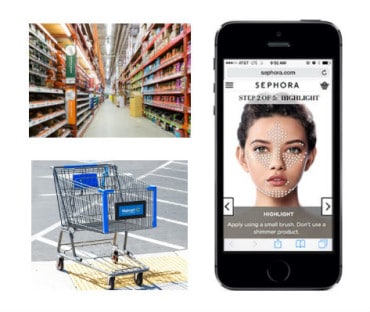
Putting the customer first often means using real-time analytics, especially in areas such as data intelligence and customer research.
With an increasing amount of transactions now online, managing customer experience in real time is key.
A recent white paper from the Digital Clarity Group—“The Ten Core Competencies Every Organization Needs to Execute a CEM Strategy,” reinforced the message. The paper mentions companies that excel at managing customer experience, such as Uber, which has pioneered a better, quicker, and cheaper way to hail a taxi in urban areas. On a practically seamless and beautiful app, there’s real-time data for cab locations, real-time payments, real-time pickup estimates, fare estimates—the works. The old way of hailing a cab—calling a phone number and waiting in an indeterminate amount of time, or standing on a corner hoping to catch a cab—will likely fall mostly by the wayside.
Another example cited is Airbnb, which has a real-time listing of homes to rent for cheaper and often better than hotels, or Apple, which excels at creating beautiful experience for customers from the design of its products to its showroom to its online store.
The big picture, according to the Digital Clarity Group paper, is that managing customer experience requires a philosophy that puts the “views, needs and aspirations” of customers at the center of an organization’s business activity. A crucial aspect is “listening and interacting with the customer,” and then forming a business strategy from that—a strategy that will likely entail Big Data and predictive analytics.
Blending Real-Time Data With Customer Experience
Here’s how a few of the 10 competencies mentioned in the paper blend with real-time data:
Customer data intelligence: Data from customer-relationship management systems now provide companies with “unprecedented ability to track, understand, tailor…and anticipate digital and physical experiences” of customers, according to the paper. However, “the data abundance is meaningless” if customers don’t take action based on that data. Even if an analytics tools is easy to use, “the abundance of structured and unstructured data from a wider array of sources means that organizations will continue to need data scientists with deep skills in math, statistics, computer science, or a combination of the three.”
User/customer research: An online product catalog for instance, could show a potential customer several style options and see what the customers like. (We’ve previously covered a use case of predictive analytics for online retailers here).
Experience Design: The Nest thermostat is cited as an example—a beautiful device that can be controlled remotely in real time through a mobile phone.
Experience design, user/customer research and data also inform another competency, which is content strategy. One of the best examples I’ve seen of how these disciplines merge is a blog post from data scientist Edwin Chen on improving Airbnb’s search algorithm. Chen questioned why some real-time search results on Airbnb are so far away from a target destination and explained why strict host rules, and the hassle of last-minute booking, detract from the user experience. He recommended that Airbnb use helpful reviews and better keyword matching for search.
A recent impact brief from “Think With Google” puts the issue of real-time data and customer experience in perspective, especially for smartphone users: “We turn to our phones with intent and expect brands to deliver immediate answers.” According to the brief, 82 percent of customers consult their smartphones while checking out a product in a store. There’s also an explosion in real-time “near me” searches. “Our preferences and purchases are shaped in these micro-moments,” the brief notes. “Ultimately, the brands that do the best job of addressing our needs in each moment will win.”
But “winning” can mean on the phone, online, in a store, or elsewhere. While analytics and customer-relationship management software are focused on knowing customers and what they want, even a business with the best hardware and software in place will suffer if a customer has a bad experience online, in a store, hotel or airline, or with shipping. The “moments” all add up.
Want more? Check out our most-read content:
Are We Good Enough at IoT Security?
Real-Time Media: How Data Helped a Digital Publisher to Thrive
Frontiers in Artificial Intelligence for the IoT: White Paper
Liked this article? Share it with your colleagues using the links below!





























